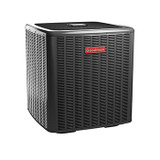Oil Vs Gas Furnaces: Which Is Better?
You might think that oil furnaces are obsolete and replaced by gas in nearly every industry. Alternatively, there’s a chance that you’re a firm believer in the power of oil-driven burners that can outperform almost anything else. Others might be strong proponents of propane or even electrically fired equipment.
No matter what your preferred technology might be, we invite you to keep an open mind as we explore some of the differences between them at the Furnace Part Source.
Similarities & Differences Between Various Furnace Technologies
Although all underlying power sources tend to be quite different, much of the basic equipment is the same. For instance, they would generally need blower motors and other such accouterments to function properly. It’s the way that the furnace is lit that’s actually different.
While they’re certainly two of the more common designs you will run across, the debate between oil and gas rages on, so we invite you to check out these basic advantages.
Benefits Of Oil Furnaces
In general, oil furnaces will actually produce more heat than a comparably sized natural gas model over the same period of time. Some view them as more energy-efficient even though both types of models are more than likely relying on some form of fossil fuel.
Oil furnaces may generate less carbon monoxide than natural gas, propane, and other types of furnaces. Depending on how they’re made, there’s a good chance that they might be more durable and cost-effective than the use of gas heating.
Benefits Of Natural Gas Furnaces
Perhaps the most significant advantage is that those who have plumbed gas lines right to their house won’t wait for someone to bring an oil truck to their home. You get always-on functionality.
Although oil will sometimes burn more efficiently than gas, the fact that there’s no need for a fleet of trucks might make natural gas furnaces a greener option.
Best of all, they’re relatively easy to maintain, although some people don’t see them quite as durable as other options. In many parts of North America, gas is slowly phasing out #2 home heating oil. However, it is still a major source of heat in others.
In either case, replacement parts like ignition modules and control boards are fairly easy to attain, especially if you make sure to work with an organization that’s dedicated to getting you the right parts.
Find The Right Components For Your Furnace At Furnace Part Source
Furnace Part Source wants to educate you on the pros and cons of different heating systems. Regardless of whether you have an oil or gas-fired furnace, there’s a good chance that you’ll eventually need some sort of replacement part that can help to restore your furnace to its original functionality.
When that time comes, make sure to contact us online at Furnace Part Source so we can get you all of the information you need to put together the best set of replacement components around.
Recent Posts
-
Trane Central Air System Not Cooling
Struggling with a Trane central air system that won’t cool your home? You’re not alone. In this deta …27th Jun 2024 -
Lennox Central Air System Not Cooling
When your Lennox central air system stops cooling, it not only disrupts your comfort but can also si …27th Jun 2024 -
Goodman Central Air System Not Cooling
When your Goodman central air system is not cooling, it can be frustrating and uncomfortable, especi …20th Jun 2024






